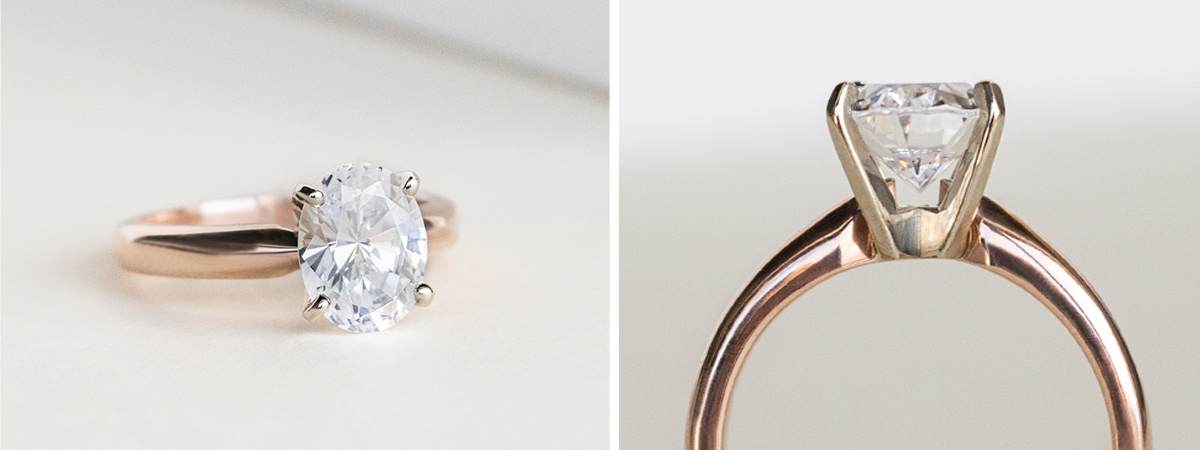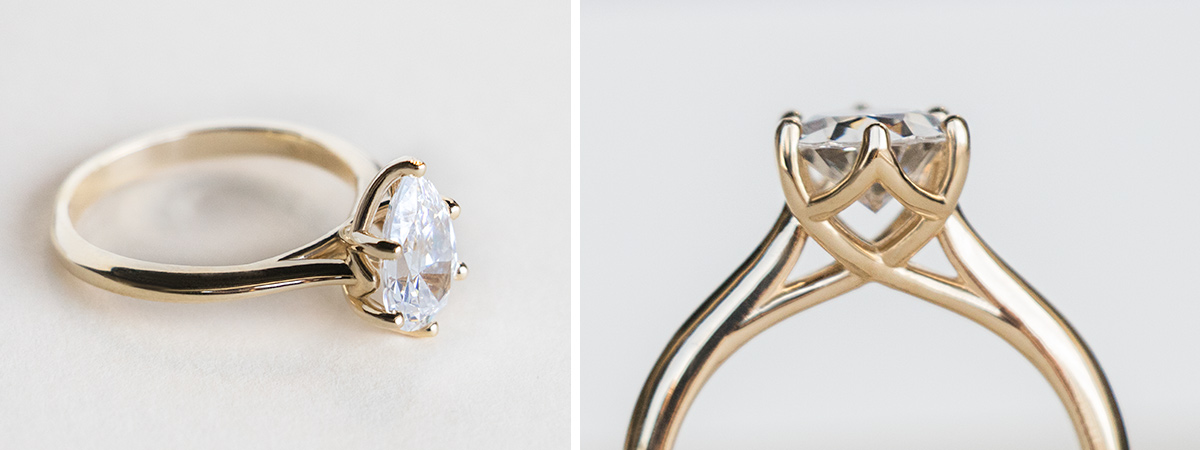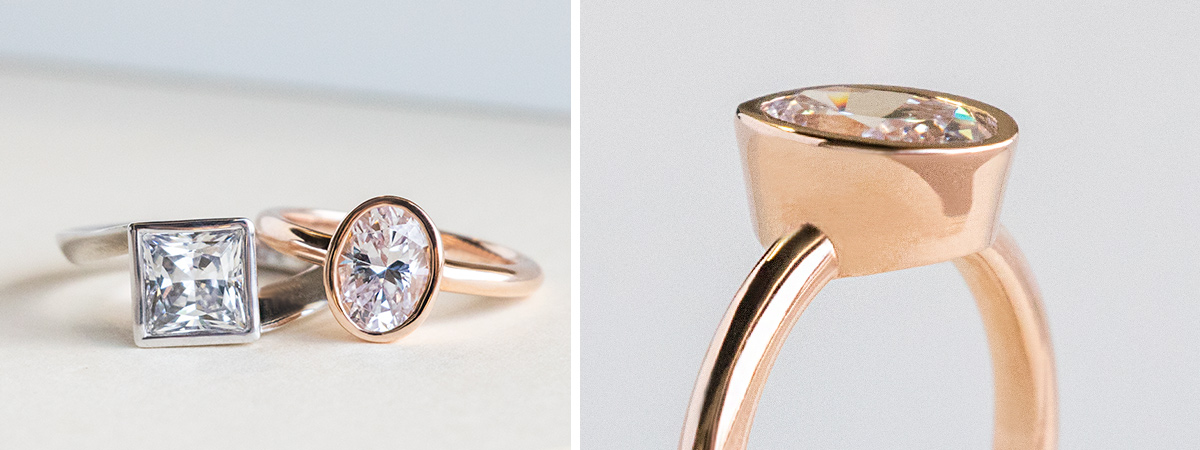At first glance, a solitaire seems like a simple and straightforward engagement ring—and it is, stylistically. But when you dive into the technical components of designing a solitaire engagement ring, there are a lot of elements that differentiate solitaire rings. Look beyond simply the stone shape to the design components that can affect the comfort, durability and character of a ring.
Here’s what you need to know to be savvy about solitaires.
Peg Heads
This is the most common solitaire engagement ring setting style. The band (or ‘shank’) and the prongs that hold the stone are two separate pieces that are soldered together. The advantage of a peg head is that the prongs can be a different metal type than the shank; for example, the prongs can be white gold while the shank is rose or yellow gold. It’s important to note that peg heads are typically a higher-profile setting, and can therefore be prone to damage if you are very rough with them or hard on your hands.
Pictured: Tapered Classic Oval Cut Solitaire
Cathedral Setting
This style of solitaire is typically a version of a peg head, so the prongs and shank are two separate pieces. However, the difference is that the shoulders (or the part of the band immediately on either side of the stone) slope upwards toward the stone. This can make a ring wear more comfortably because it doesn’t feel as though the setting is as high-profile. A cathedral style solitaire is slightly more durable, because the shoulders provide some protection against accidental knocks and catching.
Pictured: Round Cut Cathedral Solitaire
Trellis Setting
The trellis setting is a pattern of lattice-like metalwork that supports the stone. The woven setting is integrated with the shank as one piece, making it stronger and more durable. This style of solitaire is slightly more decorative, especially when viewed from the side. It has a modern quality, while still maintaining the allure of the classic solitaire, so it is perfect for those who love a classic look but need a more durable ring.
Pictured: Bali Classic Pear Cut
Basket Setting
This clean and simple setting is a type of prong setting. The stone sits within a basket of metalwork with open sides, which allows light to hit the stone from all angles. A basket setting can have straight sides, which is a more contemporary look, or curved sides to create a more elegant and romantic look.
Pictured: Fiji Radiant Cut
Tulip Setting
As its name suggests, the tulip style solitaire has a floral inspiration. The prongs look like flower petals when viewed from the side, while the top view looks like a four prong solitaire. The effect adds a subtle feminine flair to a classic design. It is typically a style of peg head, with more decorative prongs.
Pictured: Round Cut Tulip Solitaire

Bezel Setting
Bezel set solitaires are the most modern and unique style of solitaire. This style has no prongs; instead, the stone is set within a smooth circle of metal. It is a very durable, strong setting, which makes it ideal for women who are work with their hands. A bezel set solitaire will make a gorgeous statement that will last through everything you can put your hands on.
Pictured: Marseille Oval and Princess Cut
East-West Setting
If you’re set on an oblong stone cut like Radiant, Oval, Marquise or Emerald, you may love an East-West style solitaire. Instead of setting the stone vertically, it is turned on its side and sits horizontally. This style of engagement ring has been growing in popularity because of its simple yet unique style.
Pictured: East-West Maquise
Prongs
When a design is so simple, the prongs are an important element visually as well as structurally. The most traditional look is four rounded prongs (or vee prongs for Princess cut solitaires). Six prong solitaires have a subtle floral look and offer added durability. Claw prongs make a design feel more modern, and double claw prongs are even more of a eye-catching element.
Tell us what kind of solitaire is your style in the comments!





